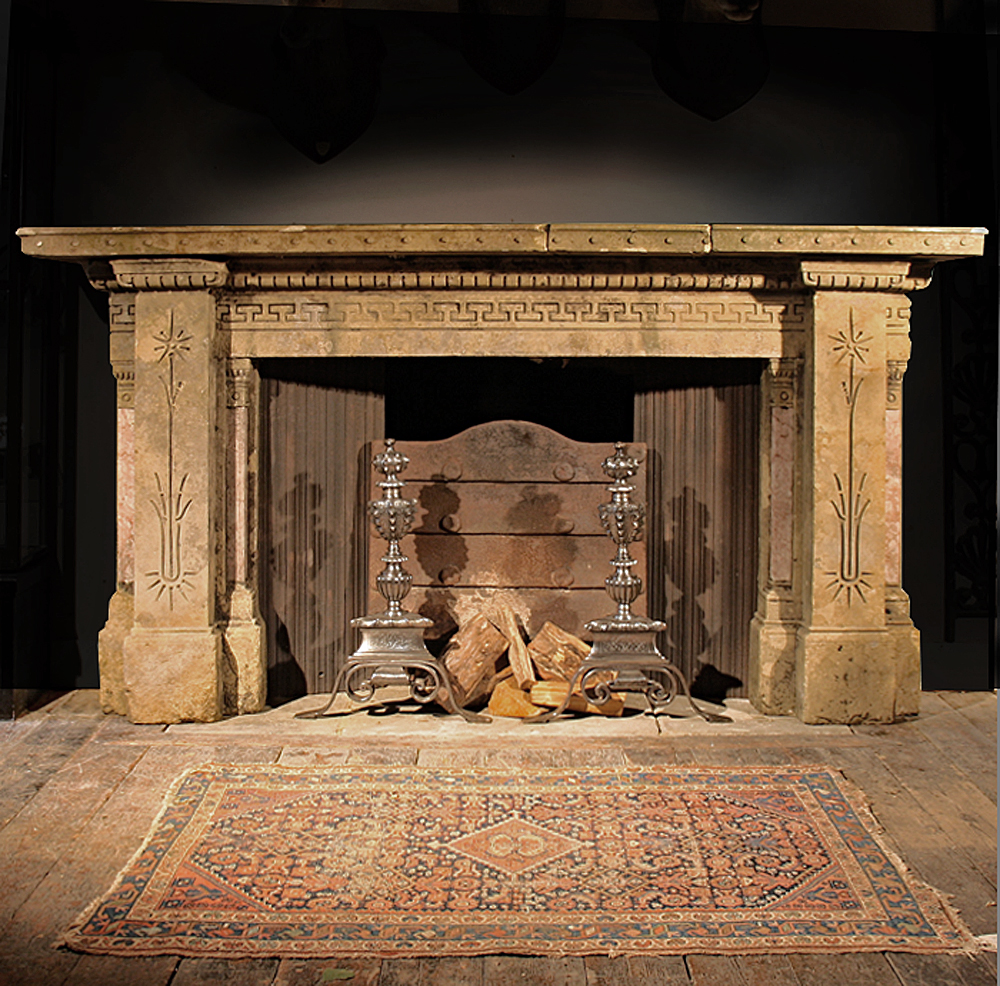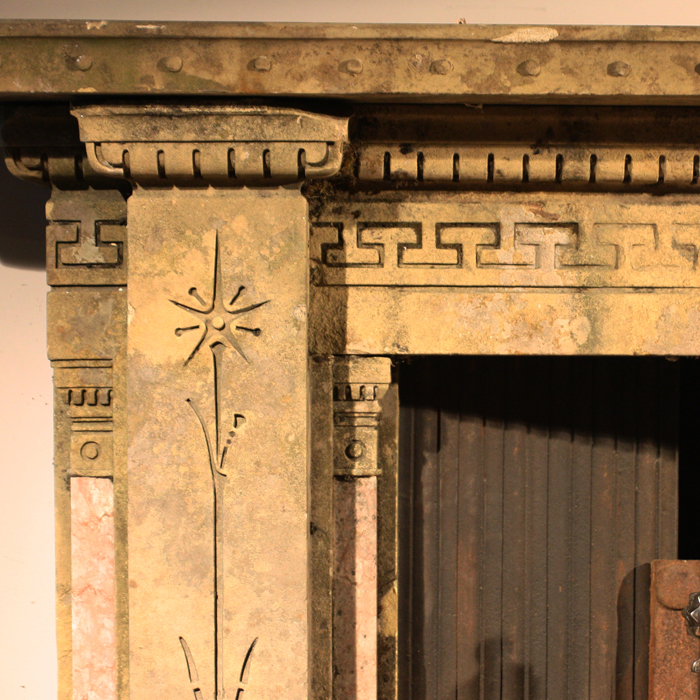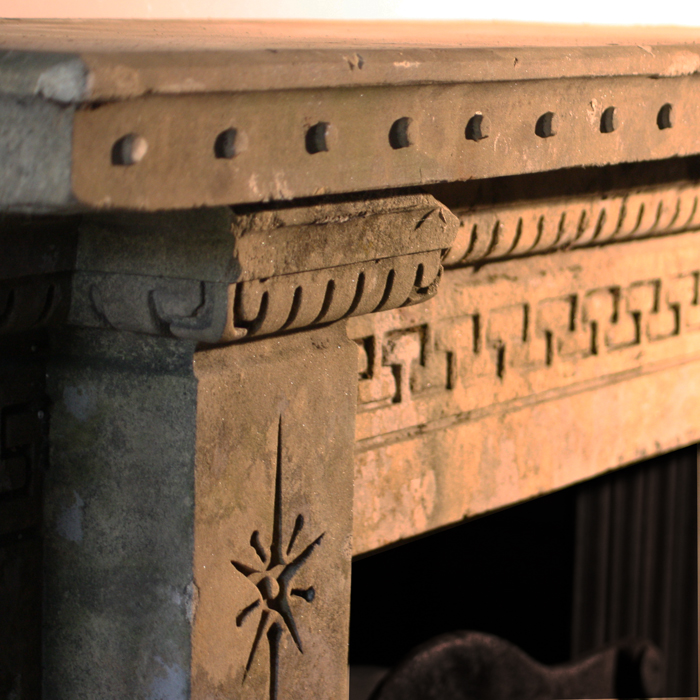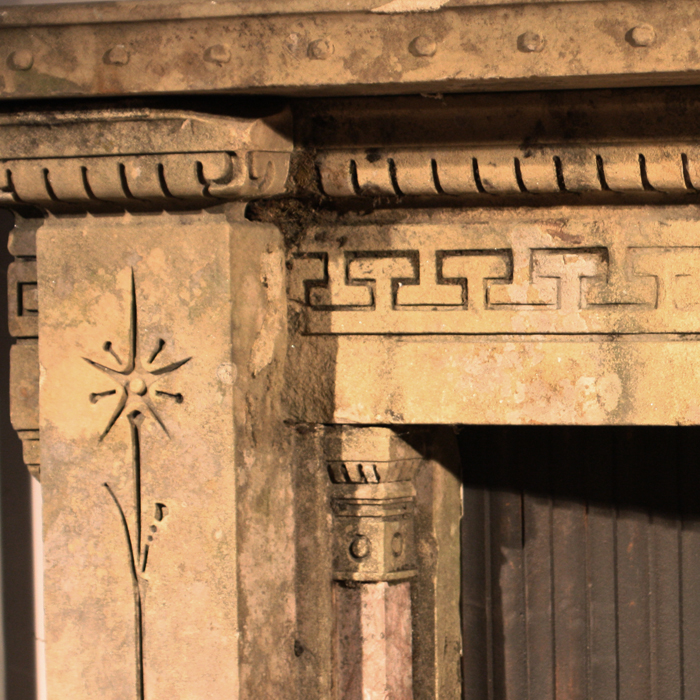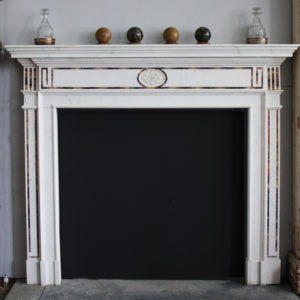No products in the basket.
Click and Collect – Please contact us to arrange collection or delivery of this item
A notable Victorian sandstone chimneypiece, with rouge royale marble details,
c.1860, to the designs by Alexander "Greek" Thomson for Holmwood House, Glasgow, here in stone for the Racquets Club, Liverpool, extracted from the ruins of the building following conflagration during the Toxteth Riots in 1981,
the rectangular shelf edged with carved studs, above two friezes - an undermoulding dentil ornament following the inverted break and the main frieze incised with a geometric Greek key band, each of the pilaster jambs incised with opposed stylised plant forms and flanked with subsidiary corner pilasters in the contrasting marble, all raised on block feet,
£26,350
In stock
The Racquets Club was destroyed by arsonists in the notorious riots in Toxteth in 1981. This chimneypiece was part of the scheme designed by a local firm of architects who had long been followers of Alexander Thomson’s work in Glasgow and had drawn on his celebrated designs for his masterpiece there: Holmwood House (now National Trust for Scotland). There are two chimneypieces at Holmwood that this sandstone fireplace closely follows – those are executed in marble.
Holmwood’s destinctive motifs run through the design.
On removal the present fireplace changed hands between salvage dealers before, palletised in pieces, it was parked in a field and forgotten for 40years. LASSCO has opted to simply brush it off and stand it up rather than embark on restoration. The shelf is broken in two places, the mouldings are weathered and worn and bear moss and lichen in the crevices.
Alexander “Greek” Thomson 1817-75 was an extraordinary architect – long celebrated alongside Mackintosh in Glasgow and more recently championed by Gavin Stamp and others – his reputation is now more widespread. Holmwood House has been saved for the nation by The National trust for Scotland – painstaking restoration there continues. The Alexander Greek Thomson Society offer this summary:
Alexander Thomson was born in Balfron, Stirlingshire, on 9th April 1817 and died in Glasgow on 22nd March 1875 at his home at no.1 Moray Place in the terrace he had himself designed.
Thomson was extremely successful with a large clientele for medium-sized villas and terraces of cottages in Pollokshields, Shawlands, Crossmyloof, Cathcart, Langbank, Bothwell and Cove and Kilcreggan.
In his day, Thomson was conspicuous for his originality in producing a distinctive modern architecture from the lessons and precedents provided by the Greeks, Egyptians and other ancient civilisations, and made extensive use of new materials like cast-iron and plate-glass.
His personal Graeco-Egyptian style was almost entirely confined to Glasgow, where he designed commercial warehouses, blocks of tenements, terraces of houses, suburban villas and three extraordinary Presbyterian churches, of which the St. Vincent Street Church is the only intact survivor.
Other important works still standing include Moray Place, Great Western Terrace, Egyptian Halls in Union Street, Grecian Buildings in Sauchiehall Street, and his villa, Holmwood, at Cathcart, which is now owned by the National Trust for Scotland.

